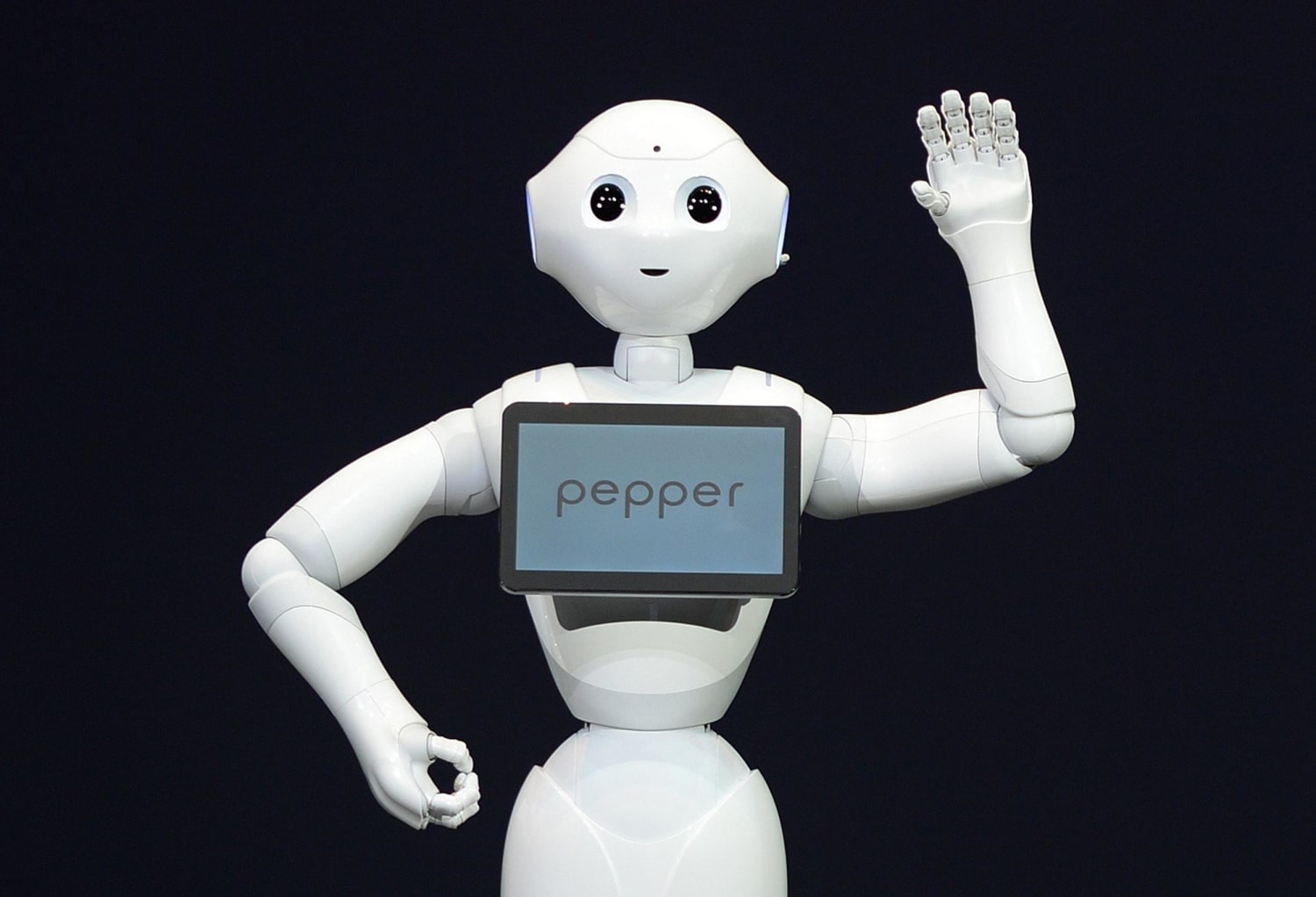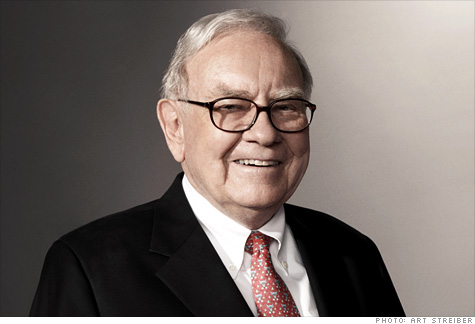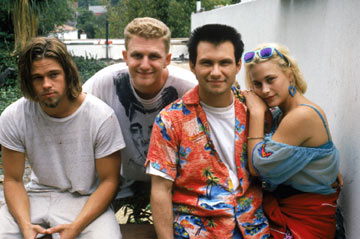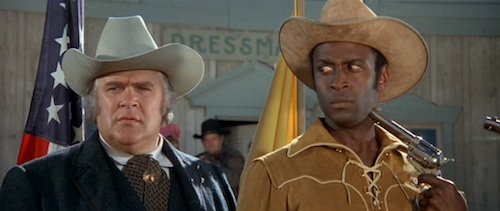We’ll get to “It’s All Happening!” later today, but first Medium Happy’s resident film critic, Chris Corbellini, files an outstanding review of “Chef”, a review so insightful and joyfully written that I wanted it at the top of our week. Also, notice what I’m doing lately: I’ve got other people doing my job now. The true definition of success in America!
Also, I must admit: I LOVED this film. –J.W.
Chef
(*** ½ stars out of four)

Trust a fat chef, in life and at the movies. It’s plain to see that Jon Favreau’s CHEF cooked up an account of his most personal feelings regarding his work in the big-budget motion picture business, and disguised it as a feel-very-good film about food, friends and family. Favreau even wrote in a scene for himself where he loses his marbles in front of a snarky food critic who eviscerated him in an online review, and though it’s played for chuckles, it starts off as an honest confession about working and trying to create something extraordinary. The two have a follow-up talk towards the end of the movie where Favreau again admits, and I’m paraphrasing: “I care about what I do, and you hurt me.” This is right from the heart, and you feel it from credits to credits. How novel, for summertime.

Everyone should have a friend like Leguziamo’s character is to Favreau in this film.
Consider Favreau’s career arc: Wowing his industry as the writer-star of the indie classic SWINGERS as a twenty-something, then climbing up the ladder to direct ELF and the first IRON MAN, worldwide hits, before his box-office misfires with COWBOYS AND ALIENS and IRON MAN 2 (I thought it was fine, many didn’t). In most circumstances, after initial success, a big budget director gets a credit line of one failure and that’s it. Two failures? It’s time to think about a syllabus and lecture series at a film school somewhere. Now consider Favreau’s movie character, the title character: he had great success as a twenty-something as a chef in Miami before moving to Los Angeles, where he still packs them in. On the night he’s to cook for that well-known critic, he’s prepared a menu list brimming with creativity and specials galore, but the restaurant owner (played by Dustin Hoffman) shoots it down, casually demanding he “play his hits.” So he fails. Twice. Very amusingly and publicly. And he loses his job and perhaps his career because of it.

ScarJo as the hostess. At the steakateria we had a hostess who honest-to-God was more fetching. Her name, and I kid you not: Goddess.
The rest of the movie is about the fallout, and what happens when a ladder-climber no longer has a ladder to climb. In my favorite scene of the movie, Favreau is standing outside the restaurant not long after his meltdown, afterhours, with his occasional friend with benefits, a hostess played by Scarlett Johansson. It’s not the most challenging of roles, but Scarlett nails the LA service industry look (dark hair, tight dark dress, visible tattoos, red lipstick) and the attitude (eye contact and a smile for the right people). He says, basically: “I don’t know what’s next. I’m lost.” She says, honestly and mercifully: “That’s a good place to start.” So he moves on. The second and third acts revolve around him operating a food truck and working for himself, and reconnecting with his young son (Emjay Anthony, who did well) as they drive from a family visit in Miami back to Los Angeles.
Not exactly a new story here — a decent-enough, down-on-his-luck fella gets his groove back by discovering what’s important in life – but hot damn, Favreau’s script gets the details right about chefs and restaurants and the joys of being a foodie (loved, loved, loved the cutaway of the three-cheese grilled cheese). The movie also adds a cute wrinkle about the possibilities and hazards of social media for someone who doesn’t use it fluently. He wages a Twitter war with the critic (“You wouldn’t know a good meal if it sat on your face”) and YouTube chronicles his very public showdown with the same guy, making him so infamous his ex-wife’s publicist (Amy Sedaris) wants him cast on a cooking reality show. Still, social media can give back as well, and it does thanks to his savvy son, who promotes the food truck and drums up business on the road — on South Beach, and in New Orleans, and Austin. This is a food-lovers road trip in Heaven, with some music montages to let the plot breathe.

I thought Favreau would write Vergara as the shrill, self-absorbed ex-wife in Brentwood. She, and her character, are a pleasant surprise.
Let’s go back to the details. Favreau’s LA in this case is the West Side: the dusty, concrete apartments of Venice, the action of Abbott Kinney, and the sun-splashed mansions north and east of the highways in Santa Monica. When the possibility of a new restaurant is explored, the property is “on Rose,” or Rose Avenue, near the border of Venice/Santa Monica, which is a perfect spot for a new place (For seven months I lived blocks away from Rose, the neighborhood is cleaning up and it’s of course close to the ocean). Bigger picture: Anyone that’s worked in a restaurant knows that the lead chef does well with the opposite sex, so a plump Favreau dating Johansson and having an ex-wife that looks like Sofia Vergara is not completely outlandish. I also liked how all of the employees called him “chef” as he barked out orders in the kitchen. That’s a real thing. Chocolate lava cake is indeed a huge audience favorite, and how to make it is a funny plot point in the film. Shots and beers at the after-hours bar is also a restaurant staff staple — the kind of joint that stays open well past legal closing time for all those attractive waitresses and hostesses, and all those lucky chefs. Every city has one. And no, you won’t find it.
The script was so warmly written that Favreau could have cast no-names in this relatively low-budget feature and still have done well through word-of-mouth. Instead, he loaded up with big-name performers. After IRON MAN and all those DINNER FOR FIVE specials, he may be the most connected filmmaker in Hollywood. John Leguizamo and Bobby Cannavale play his lieutenants in the kitchen, Oliver Platt is the critic, Johansson and Vergara are the love interests, and Hoffman plays the owner not unlike a studio head — calmly expressing that although Favreau is a talent with some freedom, he is the boss and pays the checks, so do as he says. Again, more detail: though bosses of significant power are usually portrayed in film as a variation of Yosemite Sam or Kevin Spacey in SWIMMING WITH SHARKS, in many cases it is the creatives who usually blow their stack first in important meetings, while the boss is the cooler head and must explain he or she holds all the cards … until said creative calms down, or worst-case scenario, quits.

One of many scenes involving food and friendship in Chef.
The director even squeezed in Mr. Iron Man himself, Robert Downey Jr., in a glorified cameo. Since it’s just the two of them bouncing off each other in an office, I suspect the director had just a day to shoot with Downey because of the superstar’s schedule, maybe after most of the principal photography was complete, and was prepared to produce the story without him. Regardless, it gets some good laughs. I also noticed Vergara was shot differently then the rest of the cast. Even in a Little Havana diner in the early morning hours, when Favreau looked like a pasty schlub, Vergara’s makeup and hair are perfect, and she is lensed warmly and softly in the close-ups. Is this a nod to old Hollywood glamour? Or did the Emmy winner insist on it? Eh, her role worked out too, so you do what you have to do.
And aren’t we rooting for Favreau to make it work, and keep working? The actor-director is chubbier and more weather-beaten than his twenty-something self in SWINGERS, and he’s probably had some problems at home given the demands of his career. And he plays that all off to a degree in the movie. But the themes in his good material are universal: Don’t mope for long when you get knocked on your ass. Friends and family are the most important. Don’t give up. Oh, and make it all funny.
There’s an early scene where the chef and his son are watching a puppeteer perform at Santa Monica’s Third Street Promenade, dangling a skeleton called “Mr. Bonetangles” through a macabre dance. It’s a curious, ominous cutaway, setting up the battle to come between hero and critic. And I suspect it was a happy accident. There was a time not long ago where Favreau would have had to shut down the entire block for that kind of scene for his superdude movie, and the production would have to pay the vendors (Gap, Starbucks, etc.) big cash to shut down their operations in broad daylight. In this case, it looks like he and the young actor playing his son just happened upon the puppet on the way to something else, and had a camera guy shoot it, guerilla style, before moving on. Perhaps that’s his indie roots – stealing life away from bars, Hollywood parties, and street corners. It’s never a bad thing when you go back to your roots, and work and write from your gut.

If you can see this film and pass up a Cubano the next time you come across one, more power to you.
Editor’s Note: I still work at a restaurant on weekends and for nearly a year, just a year ago, had the unforgettable –for both good and bad reasons–of working at arguably the most intense and lucrative steakhouse in Manhattan. “Chef” gets all the details correct, from “family meal” to the after hours bar (in our case, Chris, it’s Hurley’s) to the Chef being treated, with adoration, as a god by his staff. Favreau accentuates a wonderful parable by striking the minor notes deftly.
Chris did such a wonderful job here, and I hope he doesn’t mind me adding one more scene that moved me. When Favreau is in the food truck with his son, when they are still just getting to really know one another and his son is just learning about food service, the boy is about to serve a day laborer a poorly made Cubano. These were laborers to whom Favreau had promised free sandwiches, so when he asks his son why he’d serve it, the lad replies, “What’s the big deal? He didn’t pay for it.”
At that point Favreau takes him aside and, without yelling at him, explains firmly that if you have a craft or a skill you owe it to yourself to always create your best product. Most of us are not remembered for or measured by our worst dish/film, but by our worst. Great lesson.



























